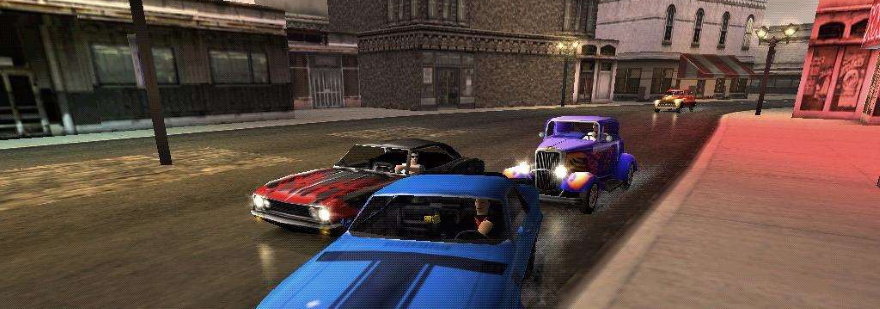
When we use the shorthand “MMO” for online games, it’s always assumed that we’re talking about swords-and-sorcery or sci-fi RPGs. However, the massively multiplayer online sports genre has existed practically as long as MMORPGs have, enjoying great popularity particularly in Asian territories.
Back in 2001, Electronic Arts — with its eyes swimming of visions of online success as the online market exploded — took a stab at its own MMO racing game. This would become the odd, and largely forgotten, tale of Motor City Online.
Back in 1994, Electronic Arts released The Need for Speed, the first of what would become a powerhouse racing franchise that’s since continued over the past 30 years. Several titles followed over the course of the ’90s, with some installments in the main series and a few enjoying offshoots.
One such title that entered development was Need for Speed: Motor City, originally a single-player game with a different approach. However, EA saw potential here for an online version and thus retooled it as an MMO that released on October 31, 2001. The game originally cost $40, which came with a free month of subscription (it was $9.99 a month thereafter).
Instead of putting players behind the wheels of sleek Formula 1 race cars or NASCAR headliner, Motor City Online chose to emphasize classic hot rod and muscle cars ranging from the ’30s to the ’70s. The idea was to appeal to players who might be closet gearheads and would enjoy tuning up and customizing their own unique machine.
Personalization and customization were the name of Motor City Online’s game. Players could dress up their racing avatar and then jump into one of over 60 vehicles from the 1932 Ford Coupe to the 1973 Pontiac Firebird Trans Am. Later on in the game’s run, EA added two fairly recent vehicles, the 1996 Toyota Supra and the 1997 Mitsubishi Eclipse Spyder GS-T, but for the most part, all of the cars featured were decades-old.
There was a whole lot to do with these cars, too. After kitting them out with the 2,000 or so parts that were included, players could engage in four game modes and race around 24 different tracks. There was even a “Turf Wars” mode that would allow clubs (Motor City Online’s version of guilds) to duke it out. By winning races, players could level up and gain new ranks — up to the coveted “Top Ace.”
Players could also place bets on races and auction off rare parts that might have been in high demand. After all, why race if you can’t put a giant pair of fuzzy dice on the rearview mirror? There was also a computer-run auction house that would occasionally feature desirable parts and cars to go to the highest bidder.
Initial reviews of Motor City Online were warm — but certainly not blazing hot. The title was found to be a little tedious and obtuse in some aspects, and reviewers greatly disliked how long it took to save up money to buy the cars they actually wanted to race. The era’s latency issues also worked against a fast-paced racing game, causing all sorts of lag and rubberbanding.
While MCO had its fans, it certainly didn’t have a lot of them, and the game’s population dwindled quickly following release. Players only had a few scant years to get in all of the races that they wanted to. In the summer of 2003, EA shut down Motor City Online, ostensibly to focus more on The Sims Online (which itself only lasted until 2008).
Several years later, Electronic Arts would make another pass at developing and running an online racing game, but this time it presented it as an offshoot of an already popular and established IP. Need for Speed World came out in 2010 and ran until 2015.
But just because the game service ended didn’t mean that players were left without a way to get their Motor City fix. Back in 2018, we reported on a method floating around that allows people to play Motor City Online… although they have to do it offline as a single-player experience. It’s good for one last lap, at the least!
 Believe it or not, MMOs did exist prior to World of Warcraft! Every two weeks, The Game Archaeologist looks back at classic online games and their history to learn a thing or two about where the industry came from… and where it might be heading.
Believe it or not, MMOs did exist prior to World of Warcraft! Every two weeks, The Game Archaeologist looks back at classic online games and their history to learn a thing or two about where the industry came from… and where it might be heading.
















